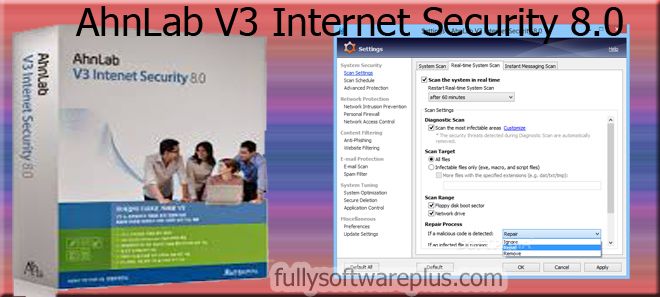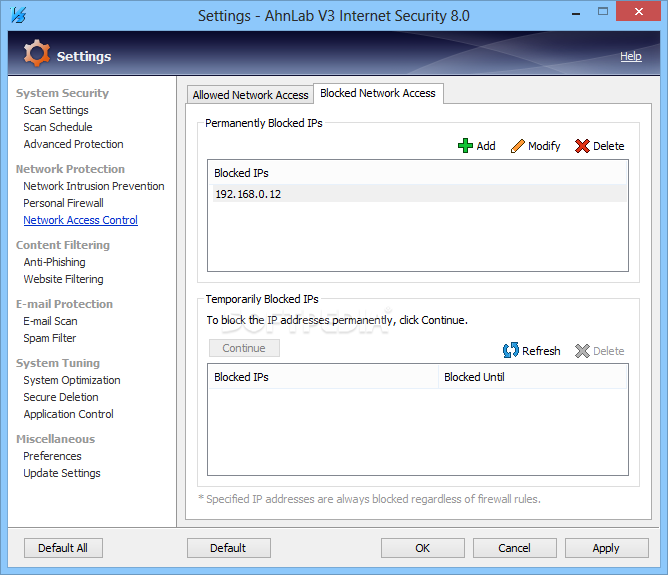AhnLab EPS
Optimized Protection
for Fixed Function Systems
Advanced cyber attacks targeting critical infrastructures and organizations of high-value have increased over the past several years. AhnLab EPS provides the control and management tools you need to protect your critical infrastructures from malicious threats.

Password Settings for the Windows Login Account (Windows 7) 1. Select Windows Start Control Panel User Account 2. Select the account used. Select Change My Password and replace the existing password by a new one which cannot be guessed easily. AhnLab ICM is a centralized security monitoring and management solution that simplifies the management of multiple AhnLab EPS servers by centralizing the data received from each server. AhnLab ICM collects and visualizes the data received from multiple AhnLab EPS servers, enabling users to quickly identify and respond to security issues found in devices connected to multiple servers.
Utilizing a lightweight agent, AhnLab EPS ensures system availability of various fixed function systems, such as Industrial Control Systems (ICS), Point of Sale (POS) Terminals, KIOSKs, and ATMs.
Business continuity and advanced endpoint protection is also ensured by AhnLab EPS with AhnLab’s exclusive whitelisting technology.
[Insights] How to Ensure System Availability Read More >
Ahnlab Windows 7 Iso
In critical infrastructures, it is important to quickly detect any existing threats to ensure a seamless operation or service. But most often, frequent security updates and patches can interfere with the operation, taking up a lot of time and system resources.

AhnLab EPS provides stable operation and optimized security for various environments. Through its advanced whitelisting technology, AhnLab EPS delivers cost-effective protection while also ensuring business continuity with simple and easy management.
Simple, Easy Operation and Management
- Allows simple administration and implementation
- Provides application control based on intelligent whitelisting technology
- Enables easy management by only allowing authorized applications to be executed
- Ensures operational continuity with minimal use of system resources with a lightweight
Ensures Productivity and Business Continuity
- Prevents malware-induced security breaches
- Provides system stability without requiring signature or patch updates
- Minimizes the use of system resources with a lightweight agent, thus providing optimized protection for fixed function systems
Cost Efficient
- Reduces system and data restoration costs by preventing malware damages
- Reduces time and costs required for system security and maintenance
Ahnlab Windows 7 Bootable
AhnLab ICM is a centralized security monitoring and management solution that simplifies the management of multiple AhnLab EPS servers by centralizing the data received from each server.
AhnLab ICM collects and visualizes the data received from multiple AhnLab EPS servers, enabling users to quickly identify and respond to security issues found in devices connected to multiple servers.
AhnLab ICM allows businesses to efficiently monitor multiple systems through an intuitive user interface. The centralized management solution also provides businesses with reporting and notification services to reduce the TCO (Total Cost of Ownership).
Key Features


- 1. Identify Risk Faster with Enhanced Visibility
- - Provides an intuitive dashboard that visualizes the status of multiple AhnLab EPS servers
- - Supports user-defined dashboard and detailed view of dashboard items
- - Enables status check/search on AhnLab EPS servers and agents connected to the server
- 2. Reduce IT Workload with Centralized Security Policy
- - Allows simple application of AhnLab EPS main policies
: Features include a search for exception list, delete all, search for disabled policies regarding malware - - Provides search for history and results regarding the delivery of AhnLab EPS policies·commands distributed by AhnLab ICM
- 3. Protect Efficiently with Simplified Security Management and Operation
- - Supports integration via EPSIC update without the migration of all servers (AhnLab EPS 2.1 or higher)
- - Provides software type/export setting to SIEM system in CEF, LEEF, Syslog format
- - Manages the latest downloads of malware scanning engines
: Engine update server path must be set to AhnLab ICM in servers higher than AhnLab EPS 2.1
Operating Environment
AhnLab ICM Web Console
Category | System Requirements |
|---|---|
CPU | Intel Core i5-6500 3.2GHz 4Core or more |
Memory | 4GB or more |
Web Browser | Internet Explorer 11 ※ More dashboard items are provided if Chrome 82 is available. |
Supported Languages | Korean, English, Chinese (Simplified) |
AhnLab ICM Web Console
Category | System Requirements |
|---|---|
OS | RHEL 8 |
Ahnlab Windows 7 Screenshot
※ Recommended hardware specifications for servers required in the installation of AhnLab ICM may vary depending on the client's environment.
AhnLab EPS is provided in both Server-Client Type (Managed Type) and Standalone Type for various environments.
System Requirements | |
Hardware | - CPU: IntelⓇXeonⓇProcessor E5 Family (8 or more, 3GHz or more, 8MB Cache or more) - Memory : 16GB - HDD • OS: 300GB x 2 (RAID 1) or more • DATA: 1TB or more (RAID type recommended) |
OS | RHEL 7.6(64bit) |
Console Browser | Internet Explorer 8.0 or higher |

System Requirements | |
Hardware | - CPU : Pentium 133MHz or more |
OS | * Embedded OS - Windows XP Embedded - Windows Embedded Standard 2009 - Windows Embedded Standard 7 - Windows Embedded POSReady 2009 - Windows Embedded POSReady 7 - Windows Embedded 8.1 Industry (Pro, Enterprise) |
* Client OS - Windows 2000 Professional - Windows XP (Professional) - Windows Vista (Enterprise, Ultimate) - Windows 7 (Professional, Enterprise, Ultimate) - Windows 8, 8.1 (Professional, Enterprise) - Windows 10 (Professional, Enterprise) - Windows 10 loT Enterprise | |
* Server OS - Windows 2000 (Server / Advanced Server) - Windows Server 2003 (Standard, Enterprise) - Windows Server 2008 (Standard, Enterprise) - Windows Server 2012 (Essentials, Standard) - Windows Server 2016 (Essentials, Standard) - Windows Server 2019 (Essentials, Standard) |
System Requirements | |
Hardware | - CPU : Intel Family (32/64 bit) - Memory : 1GB or more - HDD : 500MB or more |
OS | - CentOS: 3.3 ~ 8.1 - Red Hat Enterprise: 3.3 ~ 8.1 - Ubuntu 18.04 |
System Requirements | |
Hardware | - CPU : Pentium 233MHz or more - Memory : 64MB or more - HDD : 1.5GB or more |
OS | * Embedded OS - Windows Embedded Standard 2009 - Windows Embedded Standard 7 - Windows Embedded POSReady 2009 - Windows Embedded POSReady 7 - Windows Embedded 8.1 Industry (Pro, Enterprise) |
* Client OS - Windows XP SP3 (Professional) - Windows Vista (Enterprise, Ultimate) - Windows 7 (Professional, Enterprise, Ultimate) - Windows 8, 8.1 (Professional, Enterprise) - Windows 10 (Professional, Enterprise) | |
* Server OS - Windows Server 2008 (Standard, Enterprise) - Windows Server 2012 (Essentials, Standard) - Windows Server 2016 (Essentials, Standard) |
A system that has a weak Windows login password or has not installed the security patches will be needlessly exposed to malicious codes or hacking attacks. Not only that, but even if the malicious codes are deleted using a vaccine loaded with the latest engine, the malicious codes can attack system vulnerabilities again to re-infect and damage the system. Therefore, in order not to be infected with malicious codes spreading through vulnerabilities in the system, please make sure that the latest security patches are applied, and that the password for the Windows login account cannot easily be discovered.
1. Password Settings for the Windows Login Account (Windows 7)
- 1. Select Windows [Start] > [Control Panel] > [User Account]
- 2. Select the account used.
- 3. Select [Change My Password] and replace the existing password by a new one which cannot be guessed easily. Please note that the new password should be a combination of letters, numbers and special characters so that your system cannot be easily infected with malicious codes, which can spread if the password is vulnerable.
2. Apply Security Patches using Windows Update
- 1. Select Windows [Start] > [All Programs] > [Windows Update]. Please note: When the Windows Update Page is connected and the “Security Alert” window pops up, select “Yes”. The “Security Alert” window will not pop up for users who have already applied Windows Update.
- 2. Click “Install updates” to update your system.
- 3. In some cases, a system restart may be required. If a message is displayed to tell you that the system needs to be restarted, please reboot, because the patches for security vulnerabilities will be implemented only after system rebooting.